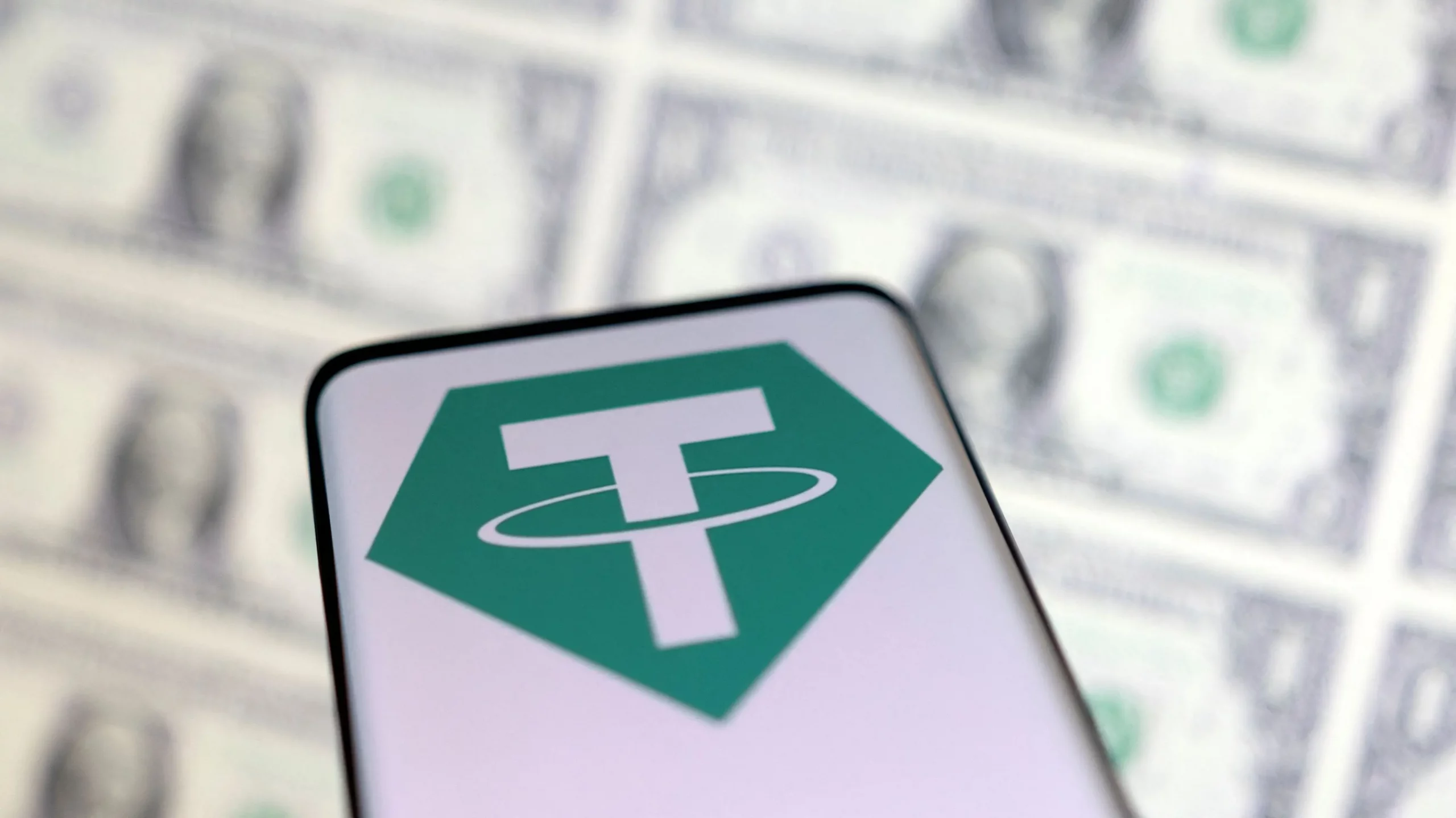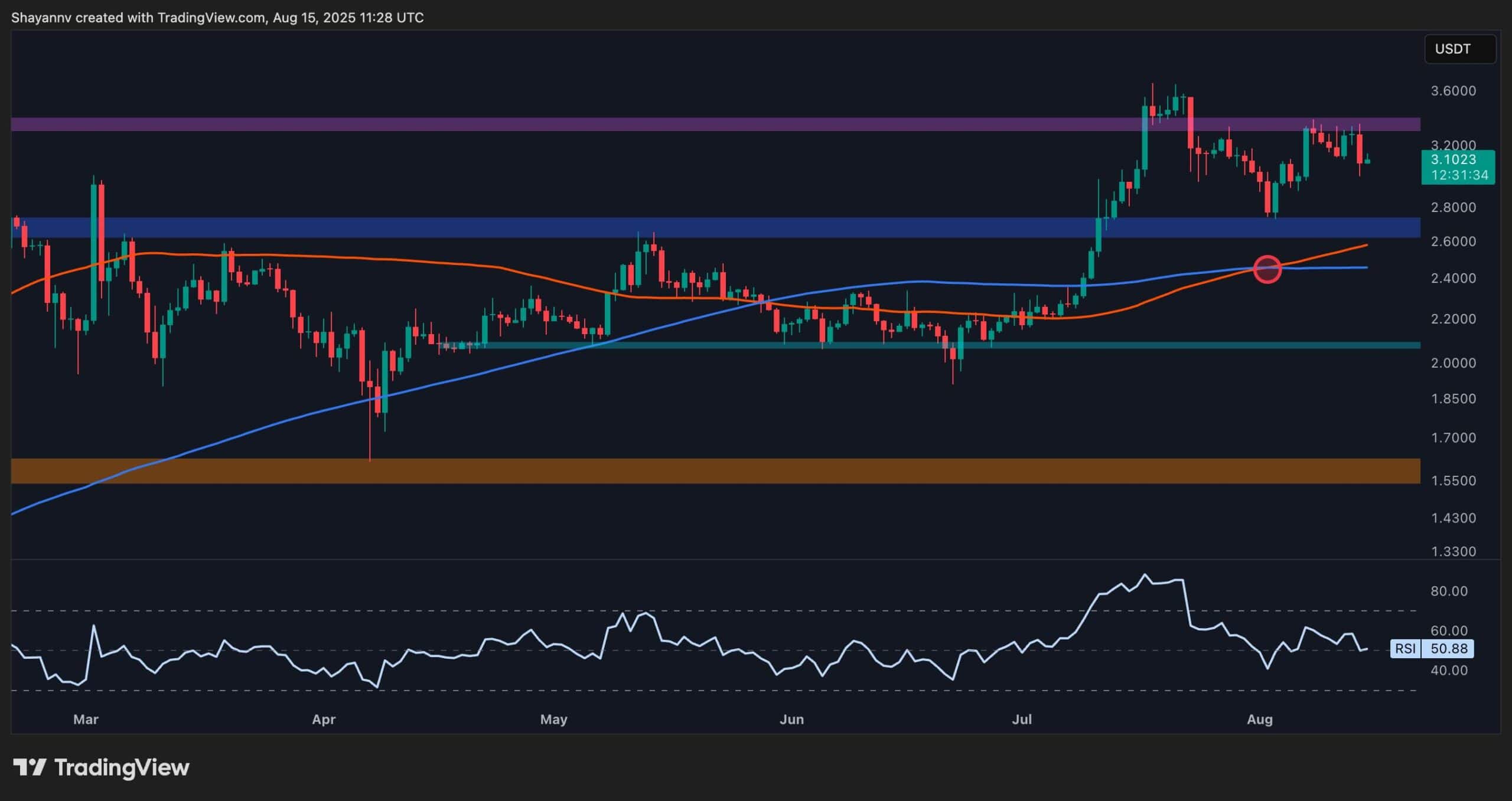Cryptocurrency
Stablecoins are a critical countermeasure to Operation Chokepoint

Stablecoins could help crypto firms to remove themselves from the banking system — and prevent the U.S. government from cutting off their financial lifelines.
Boosting financial inclusion is one of crypto’s strongest value propositions. Yet, ironically, the banking crisis has effectively de-banked the crypto industry itself, at least in the United States.
How things panned out with Silvergate, Silicon Valley Bank and Signature — the three crypto-friendly U.S. banks — reeks of what Nic Carter called “Operation Chokepoint 2.0.” There’s good merit to this claim, though naysayers peddle conspiracy theory allegations with much harshness.
Signature, for one, did not face a bank run. The Federal Deposit Insurance Corporation still took the bank over in a jiffy. Anonymous sources even alleged the FDIC had asserted that any purchaser “must agree to give up all the crypto business,” though the agency walked back those claims.
Crypto not only has the resilience but also the tools to fight back — by leveraging stablecoins to minimize bank dependence. Besides solving an immediate crisis, it can also provide the ground to establish crypto as a self-sufficient and parallel financial system. That was Satoshi’s vision, after all.
U.S. regulators are shooting themselves in the foot
There’s a reason why most regulatory authorities — except in some progressive jurisdictions — have their guns blazing for crypto. Their power rests on the toxic relationship between governments, money printers, big corporations and oligopolies disguised as banking systems. The non-intermediated, permissionless and autonomous systems that crypto enables threatens this anti-individual nexus to its very core.
Our journey toward a more equitable, individual-centric world of crypto was never meant to be easy. The hyper-aggressive response from regulators is also pretty much in line with the expectations. But somehow the authorities, especially in the U.S., don’t seem to realize that their actions are self-destructive.
Technological progress has been crucial in taking the U.S. to its current position of dominance in global geopolitics. Emerging crypto-based technologies enabled the next giant leap in this direction. And if only the regulators could overcome their greed for short-term power and control, they would see how stifling innovation isn’t in their best interest.
For instance, the ongoing banking crisis, which is very much due to misguided policy action and selective enforcement, ultimately hurts financial stability in the United States. Moreover, if it’s indeed a coordinated effort to de-bank the crypto industry, the average U.S. taxpayer is bearing most of the brunt, despite staying within legal limits.
Some projects have found a scalable way to assist crypto firms in becoming regulated institutions — such as Archblock, which onboards U.S.-based community banks to expand on-chain “real-world asset” financing for regulated entities.
While this approach might eventually resolve some regulatory tussles, a sizeable section of the global crypto community is rooting for more radical solutions.
Crypto firms don’t need banks when they have stablecoins
Stablecoins have been under much scrutiny since Terra’s “algorithmic” coin, TerraUSD (renamed to TerraClassicUSD, crashed last year, setting off a chain of events that partly led to the FTX fiasco. The crash wiped out an ecosystem worth $40 billion, but it also served valuable lessons in due diligence, overexposure and risk management.
Something like Operation Chokepoint 2.0, actual or hypothetical, is possible because crypto companies and investors use banks as on-ramps or off-ramps. There are practical reasons for this choice: One can’t buy crypto with cash, for example, and must pay with U.S. dollars from their bank account. Even while using an exchange, they need bank transfers to deposit fiat.
Involving banks so much isn’t necessary, though. Stablecoins can offer the fiat tokenization services for which crypto companies depend on banks with much risk and despair. The process isn’t decentralized, but neither is banking for that matter. It’s not about decentralization here since the goal is to connect centralized and decentralized finance while minimizing counterparty risks.
Former BitMEX CEO Arthur Hayes published a richly informative blog on the subject in March in which he presented a detailed case for choosing stablecoins over banks. Most importantly, he proposed an innovative stablecoin model, which he called the Satoshi Nakamoto Dollar or NakaDollar (NUSD). The idea is to leverage Bitcoin and inverse perpetual swaps such that NUSD doesn’t involve banks in the issuance or redemption process.
Proposals like NUSD are signs of our collective willingness to fight back in the face of regulatory uncertainty and aggressive onslaughts. As crypto evolves, there will be lesser attack surfaces for regulators, and we’ll have more robust alternatives to legacy systems.
Innovation isn’t merely a business model — it’s our biggest strength. And it is through innovation that crypto will overcome all hurdles. The show must go on since future generations deserve a better world.
Cryptocurrency
Ethereum Foundation, Whales, and Hackers: What’s Driving the ETH Sell-Off?

TL;DR
- Whales, hackers, and the Ethereum Foundation wallets moved over $500M in ETH through large sales and withdrawals.
- Ethereum transfers rose to 4.6M ETH, nearing the monthly high of 5.2M recorded in July.
- Staking inflows hit 247,900 ETH, the highest in a month, locking more supply from trading.
Large Withdrawals and Whale Activity
Ethereum (ETH) has seen heavy movement from major wallets over the past few days. On-chain data from Lookonchain shows a newly created wallet pulled 17,591 ETH, worth $81.62 million, from Kraken in just two hours.
Over three days, two new wallets withdrew a combined 71,025 ETH, valued at $330 million, from the exchange.
One of these wallets, address 0x2A92, has withdrawn 53,434 ETH, worth $242.34 million, in two days. This includes a recent purchase of 30,069 ETH, valued at $138.46 million, during a market drop.
Major ETH Holders Offload Millions Amid Price Rally
In contrast, several separate entities have been disposing of some ETH holdings. A wallet tied to a hacker address 0x17E0 sold 4,958 ETH for $22.13 million at $4,463, securing a profit of $9.75 million. Earlier this year, the same address sold 12,282 ETH at $1,932 and later bought back part of the amount at higher prices.
A different whale sold 20,600 ETH for $96.55 million over the past two days, generating a profit of more than $26 million after holding the position for nine months.
Meanwhile, an Ethereum Foundation-linked wallet, 0xF39d, sold 6,194 ETH worth $28.36 million in the last three days at an average price of $4,578.
Recent sales from the same wallet included an additional 1,100 ETH and 1,695 ETH for over $12.7 million combined.
The #EthereumFoundation-linked wallet(0xF39d) sold another 1,300 $ETH($5.87M) at $4,518 ~11 hours ago.
Over the past 3 days, this wallet has sold a total of 6,194 $ETH($28.36M) at an average price of $4,578.https://t.co/4hfCWymHVG pic.twitter.com/ErUyEY8SJy
— Lookonchain (@lookonchain) August 15, 2025
Network Activity on the Rise
CryptoQuant data shows Ethereum’s total tokens transferred have been climbing since August 9. After ranging between 1 million and 3 million ETH through late July and early August, transfers have risen to 4.6 million ETH, approaching the monthly high of 5.2 million recorded in mid-July. This increase has occurred alongside a price rally from about $3,400 to $4,600.
Interestingly, staking inflows generally stayed between 20,000 and 80,000 ETH per day over the past month. On August 14, inflows jumped to 247,900 ETH, the highest in the period.
At the time, ETH was trading near $4,600. Large staking deposits reduce the amount of ETH available for immediate trading, as staked coins are locked for a set period.
In the meantime, ETH trades at $4,647 with a 24-hour volume of $68.25 billion, down 2% on the day but up 19% over the week.
Binance Free $600 (CryptoPotato Exclusive): Use this link to register a new account and receive $600 exclusive welcome offer on Binance (full details).
LIMITED OFFER for CryptoPotato readers at Bybit: Use this link to register and open a $500 FREE position on any coin!
Cryptocurrency
Massive DOGE Whale Activity Hints at $1 Breakout

TL;DR
- Whales bought two billion DOGE this week, lifting their combined holdings to 27.6 billion coins.
- A single 900M DOGE transfer worth $208M to Binance drew attention to large exchange movements.
- DOGE broke key resistance, with momentum building for a possible push toward the $1 price mark.
Price and Market Moves
Dogecoin (DOGE) traded at $0.23 at press time, slipping 4% over the past day but still showing a 2% gain for the week. Daily turnover came in at about $6.18 billion.
Meanwhile, the broader crypto market saw over $1 billion in liquidations. Hotter-than-expected US Producer Price Index data pushed traders to scale back expectations of a near-term Federal Reserve rate cut. DOGE had roughly 290,500 coins liquidated during the sell-off.
On the two-week chart, analyst Trader Tardigrade notes that DOGE has cleared a downward-sloping resistance line after completing what appears to be a “wave V” in an Elliott Wave sequence. Similar setups in the past, where prolonged declines stayed within falling channels before breaking higher, have been followed by sharp rallies.
$Doge/2-week#Dogecoin is gaining strong momentum to surge above $1 pic.twitter.com/TuSEKr19nv
— Trader Tardigrade (@TATrader_Alan) August 15, 2025
Momentum gauges are also turning up. The Stochastic RSI, which had dropped into oversold territory, is now heading higher. Previous reversals from this zone have coincided with sustained upward moves. The current formation points to a possible run that could carry DOGE past the $1 mark.
Heavy Whale Buying and Large Transfers
As reported by CryptoPotato, blockchain data shows large investors have added two billion DOGE in the past week, spending just under $500 million. That brings their holdings to about 27.6 billion coins, or 18% of the supply. The buying streak has prompted speculation within the community.
Recently, Whale Alert flagged a 900 million DOGE transfer worth about $208 million into Binance. The tracking indicates that it originated from a wallet connected to the exchange, likely as an internal activity. The address involved holds 2.88 billion DOGE, one of the largest balances on the network.
Ali Martinez also reports that transactions above $1 million reached a one-month high, with activity building since early August and peaking as DOGE traded at $0.25.
Whales are back! Dogecoin $DOGE activity at a 1-month high. pic.twitter.com/C83Pv68mCt
— Ali (@ali_charts) August 14, 2025
Sentiment Building
Analyst Gordon described the current setup as “a nice bit of consolidation” before a potential breakout, adding,
“This will be one of the first coins normies FLOCK to & the pump will be MASSIVE.”
With whale accumulation rising, high-value transfers increasing, and a bullish technical pattern in play, DOGE is positioned for a potential push toward $1 if momentum holds.
Binance Free $600 (CryptoPotato Exclusive): Use this link to register a new account and receive $600 exclusive welcome offer on Binance (full details).
LIMITED OFFER for CryptoPotato readers at Bybit: Use this link to register and open a $500 FREE position on any coin!
Cryptocurrency
Ripple Price Analysis: XRP at Risk as Key Support Levels Could Trigger Sharp Drop

XRP has recently entered a consolidation phase after a strong rally earlier this summer, with the price action now hovering around key resistance levels on both its USDT and BTC pairs. Yet, while momentum has slowed, the charts still indicate a generally bullish structure, with multiple key support levels remaining firmly in place.
Technical Analysis
By ShayanMarkets
The USDT Pair
On the XRP/USDT daily chart, the price is currently trading near the $3.10 mark, facing a strong resistance zone around $3.40. This follows a breakout above the $2.70 range in July, which has now flipped into a support area.
Both the 100-day and 200-day moving averages are also trending upward and recently formed a bullish crossover around $2.45, reinforcing the medium-term bullish sentiment. If the $3.40 resistance breaks, a push toward the critical $4.00 range becomes likely.
However, the RSI hovering near the neutral 50 level suggests a lack of strong momentum for now, meaning a short-term pullback into the $2.80 support zone is still possible.
This zone will be key for maintaining the bullish structure. Losing it could open the door for a deeper correction toward the 200-day moving average located around the $2.40 mark. Yet, as long as the price stays above the moving averages, the broader trend remains bullish.
The BTC Pair
Looking at the XRP/BTC chart, the pair has recently pulled back after hitting the 3,000 SAT resistance, with the price currently around 2,600 SAT.
This follows a clean breakout above the long-term descending channel and a successful retest of its upper boundary, which coincided with the 200-day moving average and the 2,400 SAT support zone. This confluence remains a key bullish technical factor, as holding above it could attract renewed buying pressure.
That said, RSI levels around 48 show that momentum has cooled after the sharp July rally, meaning XRP may continue ranging between 2,400 SAT and 3,000 SAT in the near term. A decisive close above 3,000 SAT would likely open the path to the 3,400 SAT zone, while losing 2,400 SAT could shift the bias back toward 2,000 SAT support. For now, the structure still favors the bulls as long as higher lows remain intact.
Binance Free $600 (CryptoPotato Exclusive): Use this link to register a new account and receive $600 exclusive welcome offer on Binance (full details).
LIMITED OFFER for CryptoPotato readers at Bybit: Use this link to register and open a $500 FREE position on any coin!
Disclaimer: Information found on CryptoPotato is those of writers quoted. It does not represent the opinions of CryptoPotato on whether to buy, sell, or hold any investments. You are advised to conduct your own research before making any investment decisions. Use provided information at your own risk. See Disclaimer for more information.
Cryptocurrency charts by TradingView.

 Forex3 years ago
Forex3 years agoForex Today: the dollar is gaining strength amid gloomy sentiment at the start of the Fed’s week

 Forex3 years ago
Forex3 years agoUnbiased review of Pocket Option broker

 Forex3 years ago
Forex3 years agoDollar to pound sterling exchange rate today: Pound plummeted to its lowest since 1985

 Forex3 years ago
Forex3 years agoHow is the Australian dollar doing today?

 Cryptocurrency3 years ago
Cryptocurrency3 years agoWhat happened in the crypto market – current events today

 World3 years ago
World3 years agoWhy are modern video games an art form?

 Commodities3 years ago
Commodities3 years agoCopper continues to fall in price on expectations of lower demand in China

 Economy3 years ago
Economy3 years agoCrude oil tankers double in price due to EU anti-Russian sanctions































